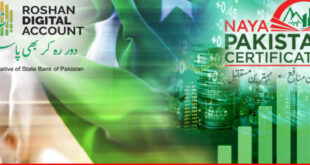Qatar the Asian land of opportunities
December 18 marks Qatar’s National Day. On this date, every year, the waterfront promenade Corniche witnesses in sheer joy the display of several volleys of hot colors emblazoning the sky. The dazzling night-time firework unleashes all prideful colors of Qatar’s veritable history and booming economy. A nation of 2.3 million people occupying 11,570 square kilometer of land, Qatar is one of the world’s richest economies on per capita GDP basis. All nations from across the world, especially Pakistanis, Indians, Nepalese, Filipinos, Egyptians, and Sri Lankans abound this city state to keep the wheel of economic progress in perpetual motion. Qatar is the newfound Asian land of opportunities.
|
TABLE SHOWING TOP FIVE COUNTRIES ON PER CAPITA GDP (NOMINAL) BASIS, FOR THE YEAR 2013
|
||||||||
|---|---|---|---|---|---|---|---|---|
|
Rank |
CIA World fact book |
United Nations |
World Bank |
IMF |
||||
|
Country |
Per Capita US$ |
Country |
Per Capita US$ |
Country |
Per Capita US$ |
Country |
Per Capita US$ |
|
|
1 |
Monaco |
159,400 |
Monaco |
173,377 |
Monaco |
163,026 |
Luxembourg |
112,473 |
|
2 |
Liechtenstein |
139,300 |
Liechtenstein |
152,933 |
Liechtenstein |
134,617 |
Norway |
100,579 |
|
3 |
Luxembourg |
110,700 |
Luxembourg |
113,373 |
Luxembourg |
111,162 |
Qatar |
98,986 |
|
4 |
Qatar |
104,300 |
Norway |
103,586 |
Norway |
100,819 |
Switzerland |
81,276 |
|
5 |
Norway |
101,400 |
Qatar |
93,352 |
Qatar |
93352 |
Australia |
64,578 |
According to the 2014 estimates, Qatar’s rank on PPP basis is first with a per capita GDP of $96,903; the rank on nominal GDP basis being second with a per capita GDP of $102,785. The affluent economy owes much to country’s huge oil and gas reserves. Qatar boasts proved oil reserves of 25 billion barrels and 25.1 trillion cubic meters of gas. Its gas reserves are third highest in the world after Russia and Iran. The ongoing oil prices slump has failed to make a dent in country’s resolve to expend more than $200 billion on infrastructure and other development projects in the foreground of the coming 2022 Football World Cup. Qatar has awarded, in first three quarters of 2014, construction contracts worth $25.6 billion.
As compared to other GCC countries, Qatar has a lower oil prices breakeven point. Moreover, it has huge fiscal reserves ($45.7 billion) in addition to a sound foreign reserves position – thanks to a consistently favorable current account. This is not the case with other GCC countries, particularly Bahrain and Oman whose shrinking oil revenues have created a fiscal scare leading them to look to the international debt market for new debts. The main projects in progress are: Qatar’s metro system, light rail system, a new port, roads, stadia and related sports infrastructure, and a new-look residential and commercial facilities. The recently opened, newly built, state-of-the-art Hamad International Airport has an initial annual passenger capacity of 24 million with a provision to expand up to 50 million.
Qatar is the smallest member of OPEC by geographical size and population, but it is one of the strongest economies. Saudi Arabia, the largest GCC economy with a GDP of $745 billion – as against Qatar’s GDP of $200 billion – is 200 times larger than Qatar by area, and 12 times larger by population. ‘Qatar is well buffered to weather a decline in oil prices,’ writes John Sfakianakis of Ashmore Group. According to another economist, Jake Jolly, foreign reserves are forecast to reach a conservative $50 billion in the medium term. This forecast excludes Sovereign Fund which is one of the wealthiest in the world, estimated to sit somewhere between $100 billion and $250 billion. Launched in 2005 by the Qatar Investment Authority, Qatar Sovereign Fund has acquired ownership of or sizeable stakes in European prime assets. It has now unfolded its programs to invest in Asia to the tune of $20 billion in addition to a recently announced investment of $2 billion in Russia.
Qatar’s enviable economic progress relies much on the functioning of an integrated system of forward looking organizations and people. A vibrant financial sector, an efficient, export-based oil and gas industry, a growth-oriented water and power management, a fast developing infrastructure, an enabling law and order situation, and a commendable anti-corruption status, all combine together into a powerful, high-octane engine of economic growth. Remy Rowhani, DG Qatar Chamber of Commerce and Industry (QCCI) recently said that he never (perhaps hardly) sleeps! He keeps himself available, on 24/7 basis to people, groups and organizations who have something to contribute to the progress and well-being of Qatar. He is of the view that people shouldn’t wait for QCCI to do something for them; they themselves should tell QCCI what they need.
After gaining independence from UK in 1971, Qatar has never looked back. Its compounded average growth rate prior to 2012 has been around 15%, much ahead of the growth rate of China. The growth rate peaked in 2006, crossing the 25% mark. In 2011, Qatar recorded a growth rate of around 19%. The rate, however, came abruptly down to 8.1% in 2012 and then to 6.5% in 2013. The estimated growth rate for 2014 is 6.3%. Qatar has the lowest unemployment level in the world with a non-existent below-the-poverty-line mass. Its GDP composition is rather unbalanced with agriculture contributing almost nothing. While industry contributes around 73%, the main thrust comes from oil and gas sectors which account for 50% of GDP with an export-dollar contribution of 85%. As the economy is overly dependent on international oil prices, Qatar needs to diversify its industrial base besides vitalizing agriculture sector.
 PAGE Blog Business Weekly Magazine
PAGE Blog Business Weekly Magazine

